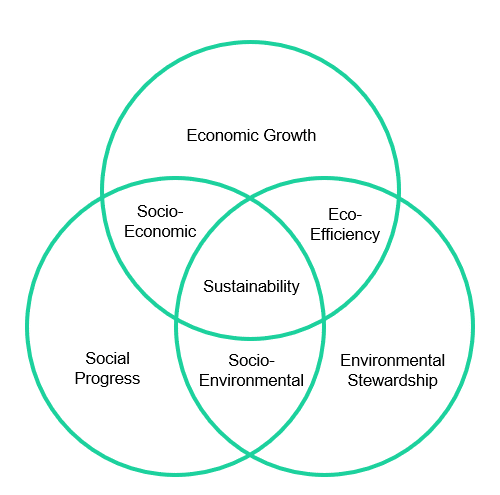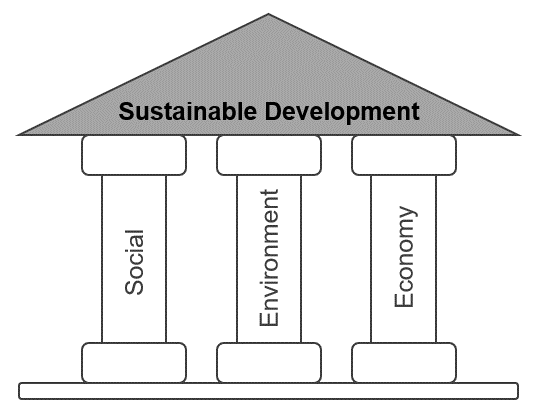Carbon Accounting Management Platform Benchmark…

Existing tools that accelerate progress towards the United Nations’ 2030 Sustainable Development Goals
Development that meets the needs of the present without compromising the ability of future generations to meet their own needs.
The Sustainable Development Goals (SDGs) are a set of 17 Global Goals set by the United Nations (UN) that aim to tackle global issues such climate change, poverty, and hunger. Not only do the SDGs aim to create a more sustainable and fairer world, but they also unlock real business opportunities for the private sector.
To achieve the SDGs, a significant scale-up of investment is required. The UN estimates that the total financing needed to achieve the SDGs is nearly $4 trillion annually. Current levels of development financing are not sufficient, with an estimated $2.5 trillion funding gap per annum to realize the SDGs in developing countries alone. Going beyond the funding gap, an appropriate allocation strategy of funds is needed to support high-need projects that require higher levels of engagement with stakeholders.
The private sector’s responsibility in addressing the funding gap is more imminent than ever. While companies are devising green and sustainable strategies, environmental and social issues in the developing world will simultaneously continue to be exacerbated by delayed action, lack of collaboration, and inefficient capital inflows.
Entering into a sustainability linked-loan, green loan, social bond and other various financial instruments in this context has a number of wide-ranging advantages for borrowers, lenders, and society as a whole.
Sustainable finance refers to any form of financial service which integrates environmental, social and governance (ESG) criteria into the business or investment decisions for the lasting benefit of both clients and society at large. It consists of a number of different financial services, products, and instruments, such as bonds, loans, revolving credit facilities (RCF), ratings, specialized investment pools, and more.
Particularly within financial instruments, bonds and loans, there is no real difference in the way their issuance is handled or how the loan is agreed. The differences relate more to the details – how the structure of each instrument is composed, how the parties will negotiate its terms, and how a payout will occur based on key performance indicators (KPIs).
In this insight piece, we will provide an initial summary of each financial instrument linked to green and sustainable finance. We will provide further information on how each instrument is structured in a series of insight pieces called “Sustainable Finance 101” – you can see all of the UN’s Sustainable Development Goals here.
Sustainable Development is by definition, “development that meets the needs of the present without compromising the ability of future generations to meet their own needs.” The definition was established in the “Our Common Future” report published by the United Nations World Commission for Environment and Development (WCED) in 1987.
The report placed environmental issues firmly on the political and private sector agenda. Most importantly, it combined the environment and development into a single problem statement, emphasizing the need for rapid multilateral response.
The three pillars of sustainable development - social, environmental, and economic - are a powerful tool for defining and addressing the complete sustainability issue. If one pillar is weak then the system as a whole is unsustainable. It has become the most widely accepted method when thinking of how sustainability can be achieved with real world results.
John Elkington, author of Cannibals with Forks and co-founder of the sustainability consultancy firm “SustainAbilty,” was one of the first people to integrate these three pillars. He argued companies needed to start considering this triple bottom line so that they could truly materialize impact.
Two popular ways to visualize the three pillars are shown:


When creating the SDGs, the UN wanted to address these three pillars with emphasis placed on private sector participation. Organizations committed trillions of dollars into sustainable development projects and multi-decade plans.
An example of the private sector’s commitment can be seen through the PRI. With 7,000 corporate signatories in 135 countries, the PRI is the world's largest voluntary sustainability initiative. Firms commit to providing regular environmental disclosures on their operations and how they are addressing their promises to reducing carbon emissions.
In what follows, we will give an overview of the various products, green and sustainability focused, that relate to both lending and bond markets. This overview will focus on the high-level elements and definitions of each product or service. Additionally, we will cover their importance in the market when applicable and which authorities are responsible for guidance whether voluntary or mandatory.
A sustainability linked loan is any type of loan instrument and/or contingent facility (such as bonding lines, guarantee lines or letters of credit) which incentivize the borrower’s achievement of ambitious, predetermined sustainability performance objectives. The borrower’s sustainability performance is measured using sustainability performance targets (SPTs), as set against key performance indicators, external ratings and/or equivalent metrics and which measure improvements in the borrower’s sustainability profile.
Subject to any applicable law, regulation and credit assessment, any entity that may borrow in the bilateral or syndicated loan market may borrow a SLL, provided it is aligned with the four core components of the Sustainability-Linked loan Principles (SLLP).
The four components of the SLLP are:
Green loans are any type of loan instrument made available exclusively to finance or refinance, in whole or in part, new and/or existing eligible Green Projects. Green loans must align with the four core components of the Green Loan Principles (GLP), as set out in the GLP.
Subject to any applicable law, regulation and credit assessment, any entity that may borrow in the bilateral or syndicated loan market may borrow a green loan, provided it is aligned with the four core components of the GLP.
The four core components of the GLP are:
There are several types of bonds available under the sustainable finance banner. The International Capital Market Association (ICMA) has outlined the requirements for a bond to be considered green, social or sustainable. The Green Bond Principles, the Social Bond Principles and the Sustainability Bond Guidelines are the trusted guidelines on the respective instruments’ usages.
The funds from these bonds are committed to environmental or climate projects, such as investing in renewable energy.
There are several different types of bonds available under the sustainable finance banner. The International Capital Market Association (ICMA) has outlined the requirements for a bond to be considered green, social or sustainable. For more details, please read the Green Bond Principles, the Social Bond Principles and the Sustainability Bond Guidelines.
The funds are committed to social impact projects, such as investing in low cost housing for people with restricted access to the housing market.
The funds are committed to marine or water projects, such as investing in transition to sustainable fish stock.
The funds are committed to social or green impact projects which are aligned with the UN Sustainable Development Goals (SDG). For example, the capital raised can be used to provide energy efficient, low cost housing for people with restricted access to the housing market.
A characteristic feature of Sustainability-Linked Bonds is that the financial aspects of the bond can vary depending on whether or not the issuer reaches the pre-defined sustainability performance targets, notably by a coupon step-up if targets are not reached (similar to SLLs for lending). While Green, Social and Sustainability Bonds are all defined using the bond proceeds to finance specific and eligible green, social or sustainable investment projects, Sustainability-Linked Bonds are linked to an issuer’s overall sustainability strategy and efforts.
Blended finance is a structuring approach that allows organizations with different objectives to invest alongside each other while achieving their own objectives (whether financial return, social impact, or a blend of both). For example, a philanthropic organization, a government entity, a development agency, and a private sector can all work together to aid a project developer in achieving goals in relation to the project. Some of those goals can focus on water and energy efficiency, but the end results can also mean stronger stakeholder engagement, increased jobs in communities, and added value for all investors participating. The participating investors can take on different levels of risk depending on risk tolerance but the private investors with higher capital flows traditionally prefer the riskier stakes in the projects.
Entering a sustainability linked-loan, green loan, social bond or other various financial instruments has a number of wide-ranging advantages for borrowers and lenders. But, primarily, it guarantees progress towards a healthier, safer, and globally united future.
As part of “Consulting for Good”, Sia Partners carries experience in setting realistic, yet ambitious, standards for borrowers and lenders. As a “Sustainability Coordinator” Sia Partners can offer negotiating services, third-party review, and ongoing monitoring, reporting, and verification of the loan terms against the Sustainability Performance Targets set out within the SLLs of the Green Loans.
Additionally, Sia Partners can help establish firm-wide goals, capacity building, ESG Management and Training, and year-long policies and regulations surrounding ESG and corporate social responsibility. With expertise in risk management, operations, compliance, data analytics, and regulations, Sia Partners can help develop ESG policies for your company to acclimate in this new environment in order to continue acceleration towards the UN SDGs and achieving Sustainable Development.
Asaad Altaai
Senior Manager
+ 1 (973) 723 - 9191
asaad.altaai@sia-partners.com
Davina Demelenne
Manager
+ (702) 430 - 1525
davina.demelenne@sia-partners.com
Fjordi Mulla
Junior Consultant
+ 1 (203) 841 - 9426
fjordi.mulla@sia-partners.com